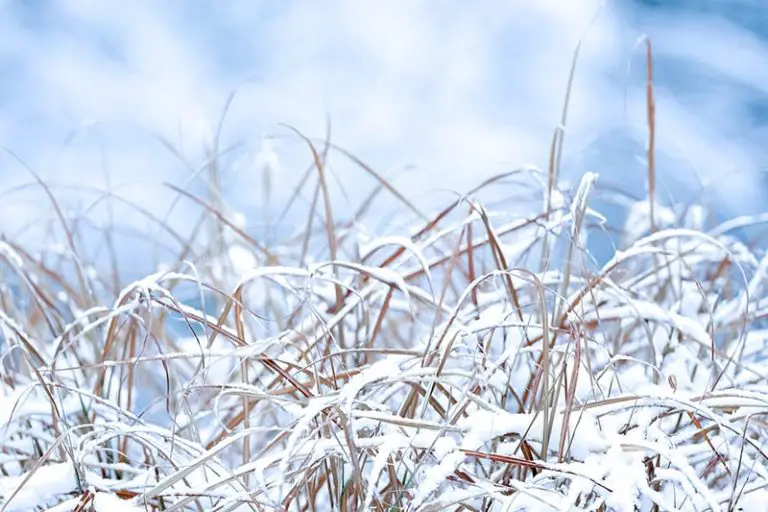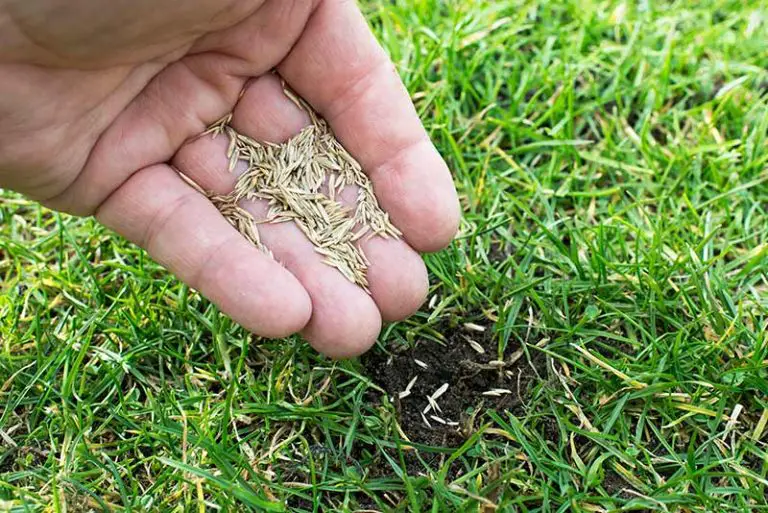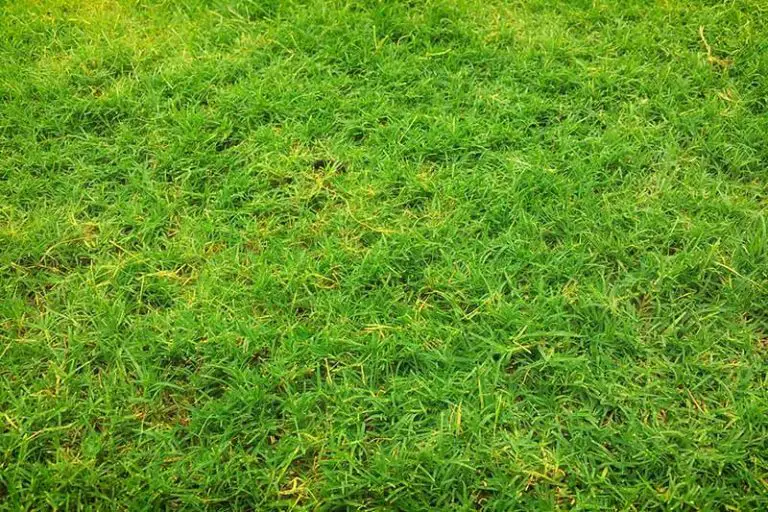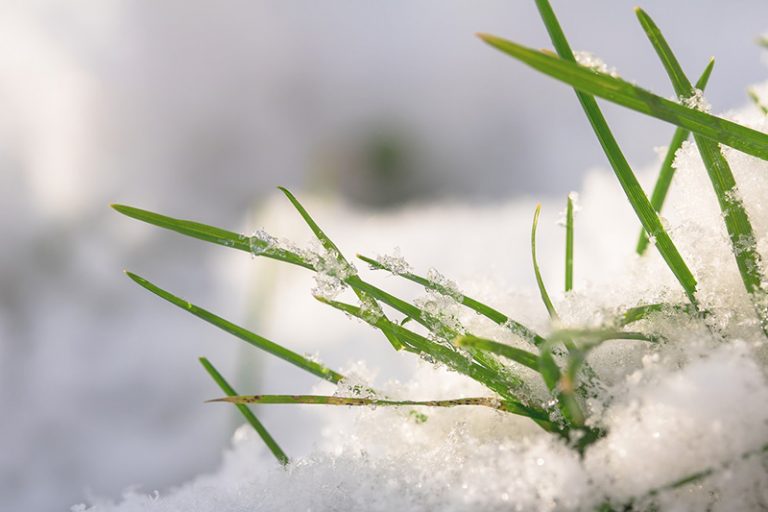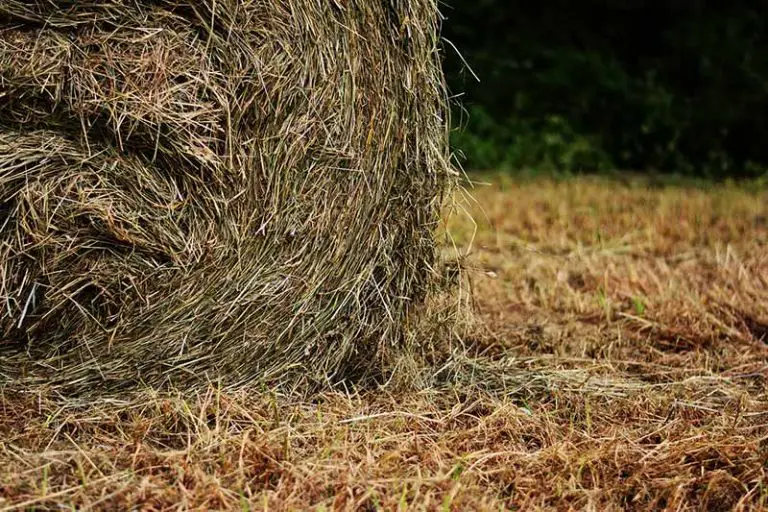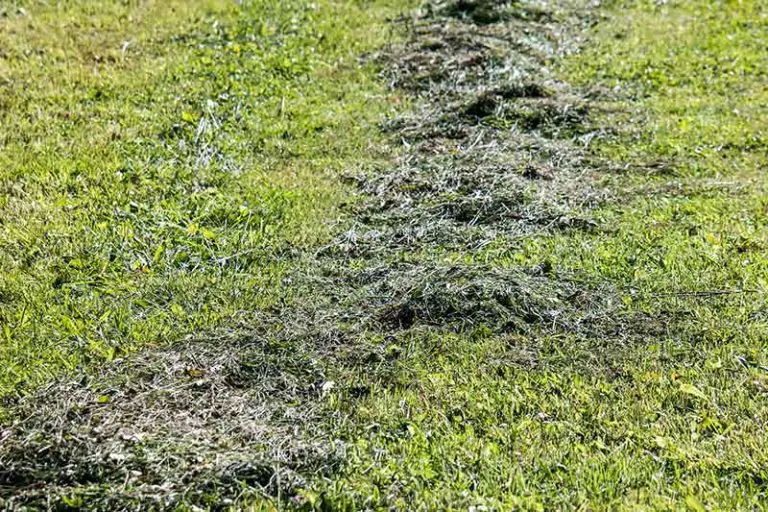How to Bring Back Dead St. Augustine Grass
When kept in healthy condition, St. Augustine grass should form a thick, carpet-like lawn, free of bare or patchy areas. So, if you’ve noticed that areas of your St. Augustine lawn have started to die off, you’ll need to do some investigative and reparative work to find out the potential sources of the problem and fix them before the issue worsens.
There are several measures you can take to bring back dead St. Augustine grass, including following a proper watering schedule, improving the soil and drainage in your yard, treating any lawn diseases, and overseeding the affected areas of the lawn. This article explains the potential reasons why your St. Augustine grass is dying off, along with the different methods you can use to get your lawn back to full health.
What Is St. Augustine Grass?
St. Augustine grass is a type of Bermuda grass known for its coarse blades and dark green color that can tolerate both heat and cold well.
It’s typically the most popular type of grass for temperate climates like those found in the southeastern United States.
What Does Dead St. Augustine Grass Look Like?
When this type of grass dies, you’ll notice thin, shaggy patches of grass.
A healthy lawn has a nice green color and is at least 3 inches tall. The stems in dead St. Augustine grass are often thin and brown or gray.
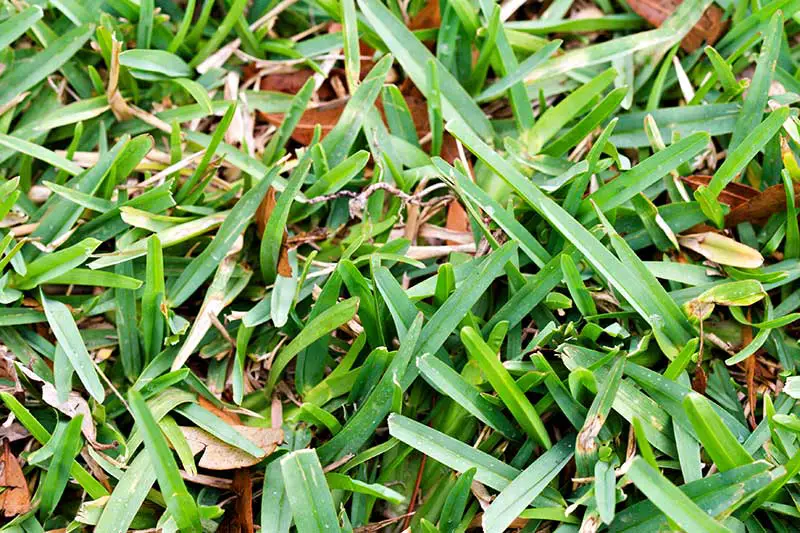
What Causes St. Augustine to Die?
There are several reasons why your lawn might become brown.
Damage from Frost
One of the most common reasons for dead St. Augustine lawn patches is cold weather that damages or kills the blades.
It’s safe to assume that frost killed it if you notice brown patches after your first frost.
This type of grass isn’t meant to handle very low temperatures. If you’re in an area with early frosts, then you’ll have to cover the grass with mulch or bring in some other type of protective layer.
Lawn Diseases
Lawn diseases that affect St. Augustine grass include:
- Gray leaf spot
- Brown patch fungus
- Pythium blight
These lawn diseases are a result of a fungus that’s hard to see because it grows underneath the grass blades.
The fungus typically enters through small tears or openings in the top layer of your lawn caused by traffic, pets too close to the grass, or excessive wear.
Turf Weeds
Another cause of dead St. Augustine is broadleaf weeds, which are common throughout the south where there’s a lot of rain and humidity.
Some of these weeds include clover, dandelion, and even wild violets.
Weed seeds germinate in late spring or early summer when they have access to plenty of nutrients and moisture. They mature over the summer until winter hits.
Poor Soil Quality
Poor soil quality can also cause a dead St. Augustine lawn.
A St. Augustine yard thrives in well-draining, nutrient-rich soil with a pH level between 6 and 7 that is wet but not soggy. If you haven’t tested your soil recently, then it’s best to do so every fall. You can have a professional test your soil, or you can do it yourself with an at-home kit.
Too Much Fertilizer
Fertilizing your lawn may seem like the perfect cure for weak grass. However, using too much fertilizer or fertilizing too often can burn your grass just as much as not enough.
Iron Chlorosis
A sign of iron chlorosis is leaves turning yellow on a St. Augustine lawn. The chlorine pulls moisture from the roots of both dead and living St. Augustine grass, causing the blades to die out.
There are several ways you can fix this problem. You can try watering with iron-rich water. You should also pay attention to how much fertilizer you’re laying down on your St. Augustine yard during the spring and summer months. Too much iron supplementation can also cause the grass to die.
Pest Infestation
Insects and even pets have a hand in causing patches of St. Augustine to die out. Snakes, lizards, and armadillos are just a few of the animals that enjoy eating this type of grass.
Insects such as mole crickets and ants can cause brown patches that lead to dead grass. They do this by digging up the soil and removing nutrients from the ground.
Drought Stress
If your St. Augustine has gone too long without water, then the blades will turn brown and die.
Once the roots are dry, they can’t absorb moisture or nutrients such as nitrogen. That’s why it’s important to water your lawn properly during the hot summer months.
Another sign of drought stress is gray leaves on a St. Augustine lawn. The leaves fade because there aren’t enough nutrients to maintain their healthy green color.
St. Augustine grasses that are naturally gray or have thin blades are more susceptible to drought stress. On the other hand, dark green St. Augustine is less likely to dry out.
Steps to Bringing Back St. Augustine
After you figure out what caused the damage to your St. Augustine lawn, use the appropriate fix.
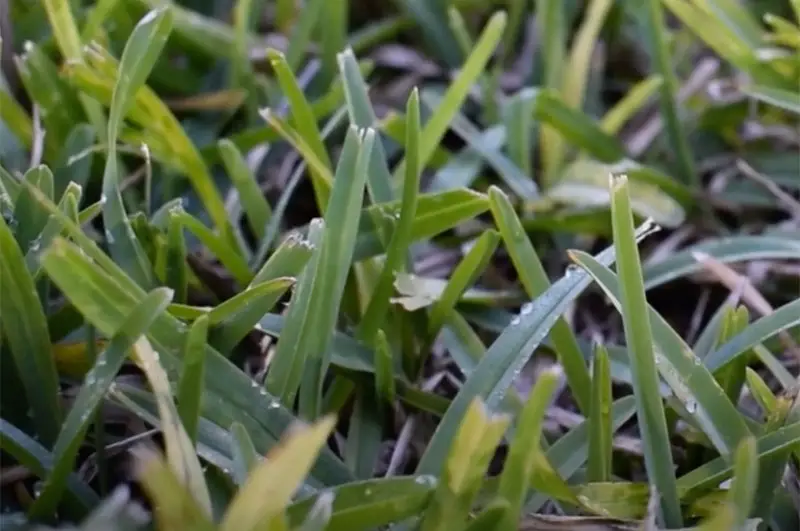
Water the Grass Correctly
Make sure your St. Augustine gets enough water to keep it green and healthy, but not so much that the roots rot or the blades wilt.
The best way to make sure you’re watering correctly is by using a rain gauge or an irrigation system that measures exact amounts of water.
Proper St. Augustine watering frequency:
- During winter or drought months, St. Augustine requires 1-2 inches of water per week.
- In the warm spring and summer months, when your lawn is actively growing, it needs 2-3 inches of water per week.
Make sure you aren’t overwatering your St. Augustine lawn. This can lead to the softening of the soil and root rot or runoff.
Improve Your Yard’s Soil
Help bring back your St. Augustine grass by adding nutrients to your soil. You can do this by applying grass seed, fertilizer, or compost. Make sure you only use the recommended amounts on the package.
Create Better Drainage
Soil that becomes compacted won’t allow water and nutrients to reach the roots of St. Augustine grass.
You can fix this problem by aerating the soil. You can do this manually or by having a professional company do it for you. In addition to breaking up compaction, other lawn care activities will be much more effective if you carry them out after aerating the soil.
You can also opt to have your lawn professionally dethatched so the dead grass gets removed and new seedlings will grow in more effectively. Dethatching lets water, air, nutrients, and fertilizer get to the roots.
Overseed the Lawn
If it’s been more than five weeks since you’ve noticed dead St. Augustine grass and the blades are still yellow, then it’s time to start over.
To overseed, first remove any dead pieces of grass. Rake up loose soil so that the new seeds will take hold in the soil. Use a roller to press down on the lawn as much as possible so that there are no air pockets in the soil.
At this stage, you can also add fertilizer before or after overseeding to help the new seeds germinate and encourage green growth once they do.
Treat Diseases, Such as Brown Patch Disease
Brown patch disease is a fungus that causes brown, circular patches to appear on the blades. It turns into a corky texture at higher levels of infection.
One way to help prevent this fungal disease in St. Augustine grass is by applying fungicides in early fall and late spring. You want to do this before the fungus has a chance to grow and spread.
If you live in an area where brown patch disease is prevalent, then it’s best to ask your local garden center about preventative measures and treatments.
Frequently Asked Questions
Let’s review additional questions that might still confuse the issue about bringing back a dead St. Augustine lawn.
What Is the Best Fertilizer for a St Augustine Lawn?
Fertilizers that are 3-1-2 or 4-1-2 work well because they provide nitrogen, phosphorus, and potassium (which help with root growth). These types of fertilizer also help control grubs and other insects.
What Month Should I Fertilize a St. Augustine Lawn?
St Augustine grass is a warm-season grass, so fertilizing in the spring or summer months is ideal. You can also fertilize your St. Augustine lawn again in September or October with nitrogen-rich fertilizer.
How Can I Make my St Augustine Lawn Thicker?
To make your St. Augustine lawn thicker, you can increase water and fertilizer. Doing so helps grass blades grow wider. This practice will also develop deeper roots that become stronger and more resistant to disease.
How do I Get Rid of Weeds Without Killing St Augustine?
To kill weeds without killing your St. Augustine, you can apply broadleaf herbicides so that the weed dies at its roots and will no longer have a chance to grow. These types of herbicides leave your desired grass alone.
What is the Proper Height to Cut St Augustine Grass?
For St. Augustine lawns, you should cut it to about 2 inches high at the beginning of summer. From there, increase to whatever mowing height you want (3-4 inches) before winter.
Conclusion
If you have problems with your St. Augustine dying, you now know there are steps you can take to bring it back!
Identifying what’s causing the problem is the key part of the solution. Then, you can take the most logical corrective action. You’ll soon watch your lawn turn into a lush, green area once again.

